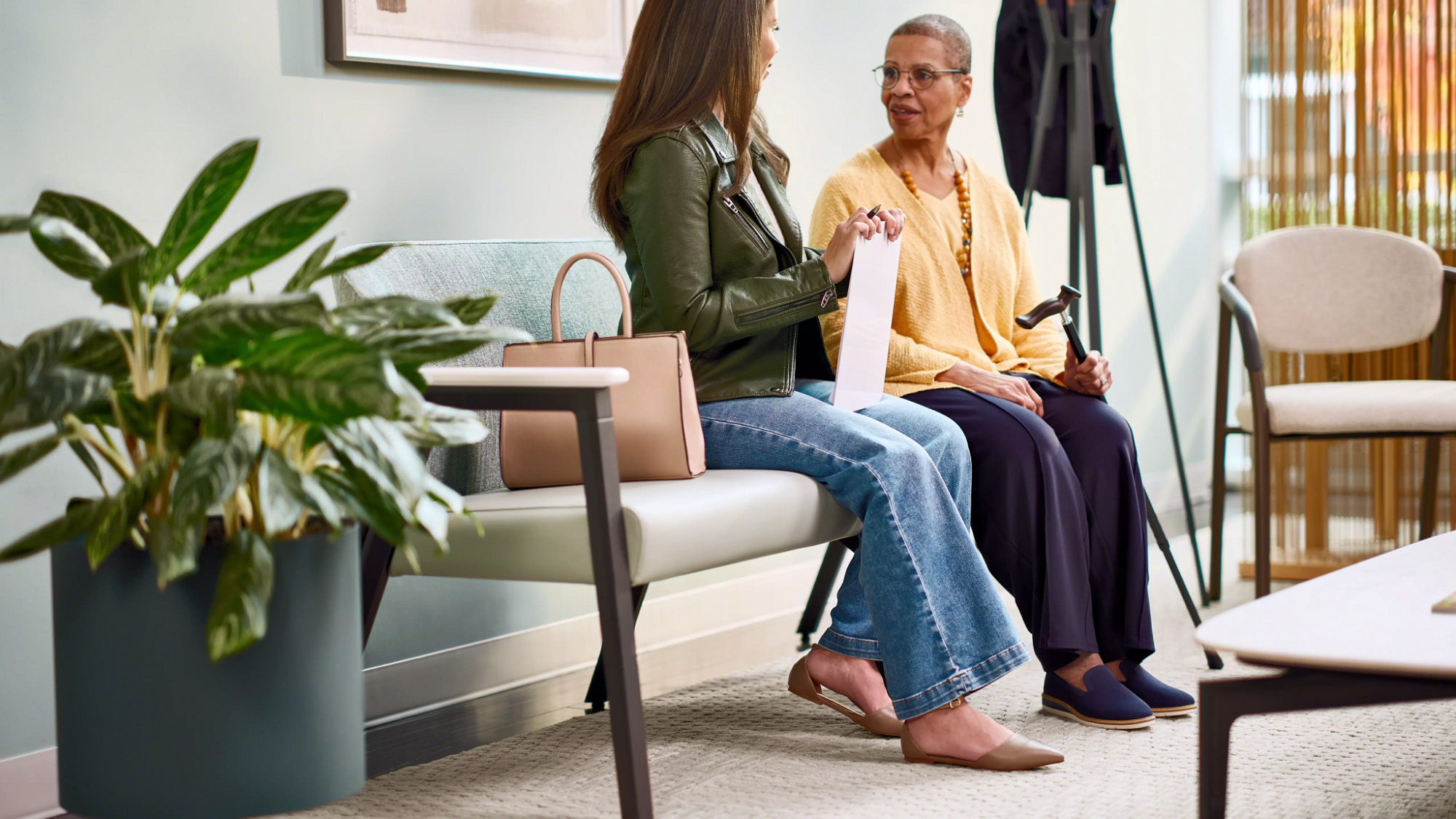Insights and ideas to improve the healthcare experience
The pandemic proved to be an extreme pressure test on the entire healthcare system. While clinicians performed above and beyond, the crisis really identified where the opportunities in healthcare exist.
What’s emerging now is a stronger-than-ever realization that purposeful, human-centered design can have a very positive effect. While there are many ways to address this, Steelcase Health has identified three areas of focus to help organizations improve the healthcare experience and outcomes for everyone involved – patients and their families, as well as clinicians and staff.

Spaces where health happens must be met with extreme flexibility – handling what’s now and anticipating what’s next.
Designing for flexibility can help organizations adapt to changing models of care delivery while reducing the cost of renovations. According to the National Library of Medicine, the pandemic “revealed that many modern hospitals and healthcare organizations lack the flexibility to accommodate sudden surges of patients due to unexpected healthcare situations.” It goes on to say that “flexibility is the key requirement of healthcare facilities of the future and consequently designers need to consider the unknown needs due to technological, societal and epidemiological changes.”
“Flexibility is the key requirement of healthcare facilities of the future and consequently designers need to consider the unknown.”
Today most healthcare facilities have fixed components, such as permanent walls and millwork. This approach makes it difficult to change the space quickly when new needs or crises occur. By creating spaces that are move versatile with components that are not as fixed, such as height-adjustable desks, moveable screens, modular casework, furniture on casters, you can provide ad-hoc flexibility to any space. And organizations save money with furniture that supports multiple functions or can be updated more easily. A cafe space can become a training room. A multipurpose zone replaces a traditional waiting room.

Healthcare environments need to address both the physical and emotional wellbeing of people.
Healthcare visits, whether planned or in an emergency, often conjure up an image of a familiar set-up: hard surfaces, cool tones and a sterile feeling environment. These spaces often leave patients feeling anxious and stressed. Healing spaces need to increase overall wellbeing and go beyond physical health to also include mental, emotional and social health.
“Medical facilities are mostly designed to help you get physically better. But they don’t always account for the rest of you,” says Seth Starner, Advanced Explorations, Steelcase Health. ” By creating spaces that are warmer and approachable, patients and loved ones can feel a little safer and more taken care of, tending to their overall wellness.”
By using materials that are both functional and beautiful, providing access to natural light and giving patients more control over their experience, healthcare environments can become more calming and welcoming.

The wellbeing of healthcare workers – whose jobs are centered on taking good care of others – is all too often overlooked in their own work environments.
Compared to people in other professions, those who work in healthcare disproportionately experience exhaustion, dissatisfaction, depression and burnout. Clinicians are always coping with sickness and death. It’s unavoidable. But there are other causes of burnout, too: busy, high-stress environments and always putting others first. Space can be a tool to address those things.
Spaces for breaks have typically been minimized in the floorplate and their location can be inconvenient for actual use.
And then there’s the experience. Many break rooms have become cluttered spaces or overflow storage rooms – in other works, an afterthought. Or they’re just one big, noisy room. At the 2022 Healthcare Design Conference & Expo, a nurse said, “I’m not going to feel comfortable going into the breakroom to cry during a difficult shift while sitting next to a coworker who is eating lunch.”
Respite means different things to different people. So, you need diverse types of respite areas available to suit various needs. Organizations are looking for ways to reclaim underutilized spaces and repurpose them for respite spaces instead. And it’s important that organizations keep these spaces well maintained, warm and welcoming.
The healthcare industry is renewing its focus on setting its staff up for success. When designers make spaces to run smoothly and caregivers feel supported by their spaces and leadership, they create better experiences for their patients. Better supported caregivers consistently yield better scores on the HCAHPS, a survey measuring patient perceptions of their hospital experience.
“There are signs that the whole culture of clinician self-sacrifice is starting to be challenged and recognized as unsustainable, that clinicians can’t give the best care if their own needs are being ignored. It’s becoming a big recruitment and retention issue.”

Health Takeaways
3 insights and ideas for improving healthcare experiences
- Spaces where health happens must be met with extreme flexibility – handling what’s now and anticipating what’s next.
- Healthcare environments need to address both the physical and emotional wellbeing of people.
- The wellbeing of healthcare workers – whose jobs are centered on taking good care of others – is all too often overlooked in their own work environments.
Receive our Newsletter
To receive our newsletter, including new editions of spaces and other digital content, fill out the form:



